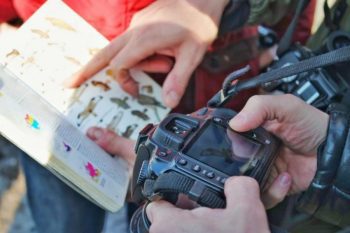The Great Backyard Bird Count Is Coming!
Take Part in the Great Backyard Bird Count
What better way to spend a winter day than watching birds?
You don’t have to be an avid birder to contribute to the understanding of bird populations. Each February thousands of homeowners, amateur and experienced birders alike, take part in the Great Backyard Bird Count. This four-day event is a citizen science project developed by the Cornell University Lab of Ornithology and National Audubon Society to collect data on wild birds and to display results on-line in near real-time.
Why the Great Backyard Bird Count?
Bird populations are dynamic – they are constantly in flux. No single scientist or team of scientists could hope to document and understand the complex distribution and movements of so many species in such a short time. The annual count creates a snapshot of bird distribution to help scientists better understand their habits. The count takes place before spring migrations each year.
How to Participate in the Great Backyard Bird Count
This year’s event is scheduled for February 12-15. You can participate alone or with your friends and family by registering online and spending at least 15 minutes on one or more days of the count to simply tally the numbers and kinds of birds you see. You can count from any location, anywhere in the world! Count for fifteen minutes or as long as you want, then enter your list online. To learn more, visit the Great Backyard Bird Count website: www.birdcount.org.
Identifying Birds
There are countless field guides to help you identify birds. The Cornell Lab’s Merlin Bird ID app is a great resource for your phone or tablet. By answering a few simple questions about the size and location of the bird in question, the app generates a list of possible matches. You can also use snapshots of birds for identification.
Want to Attract More Birds to Your Garden?
Just like humans, birds have three basic needs: food, water, and shelter. To attract more birds to the landscape, we want to look for ways to provide for these basic needs. While birdfeeders attract a variety of seed-feeding birds, not all birds visit feeders. You can attract more birds by planting a diversity of trees, shrubs, grasses, and perennials.
Shrubs and understory trees like redbuds, hollies, and dogwoods provide nesting and roosting sites. Many trees and shrubs also provide food in the form of fruits and nectar-rich flowers. Viburnums are a great shrub for attracting birds, while hummingbirds pollinate the blooms of native currants (Ribes spp.) which later produce fruits for songbirds.
Grasses and flowering plants provide a sheltering ground layer as well as nectar, pollen, and seeds. Look for plants that bloom in different seasons to provide resources all season long. Gaillardia bloom throughout the summer, while asters and many salvias provide nectar late in the season. Native grasses, coneflowers, and globe thistles provide a natural source of birdseed.
Finish your bird garden with a source of water where birds can drink and bathe. A simple bird bath or trickling fountain will draw in birds that don’t visit your feeders so you can enjoy a greater diversity of these feathered jewels. Then grab a notebook, sit back, and take part in the Great Backyard Bird Count.
Take a look below for more information about the event!

